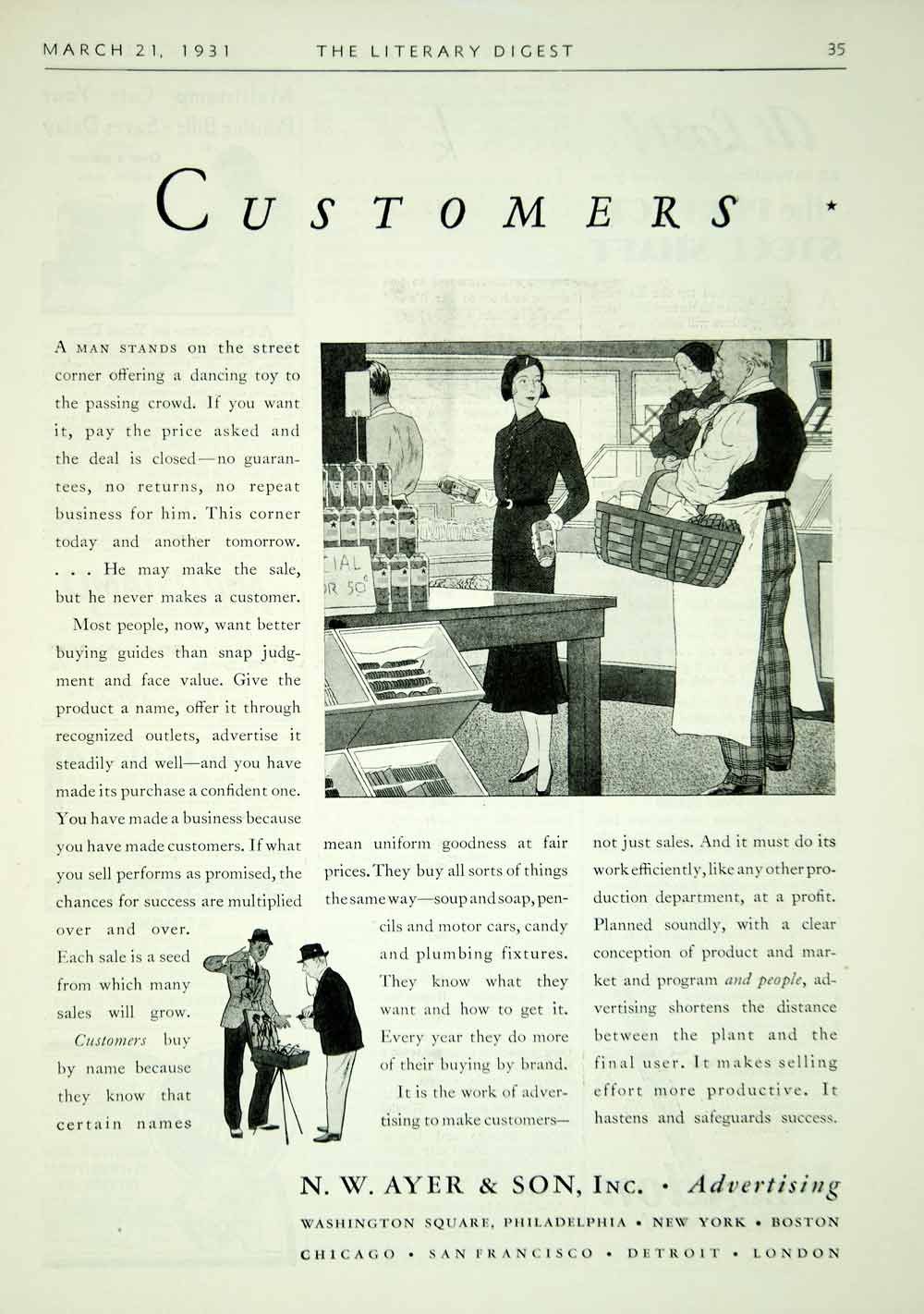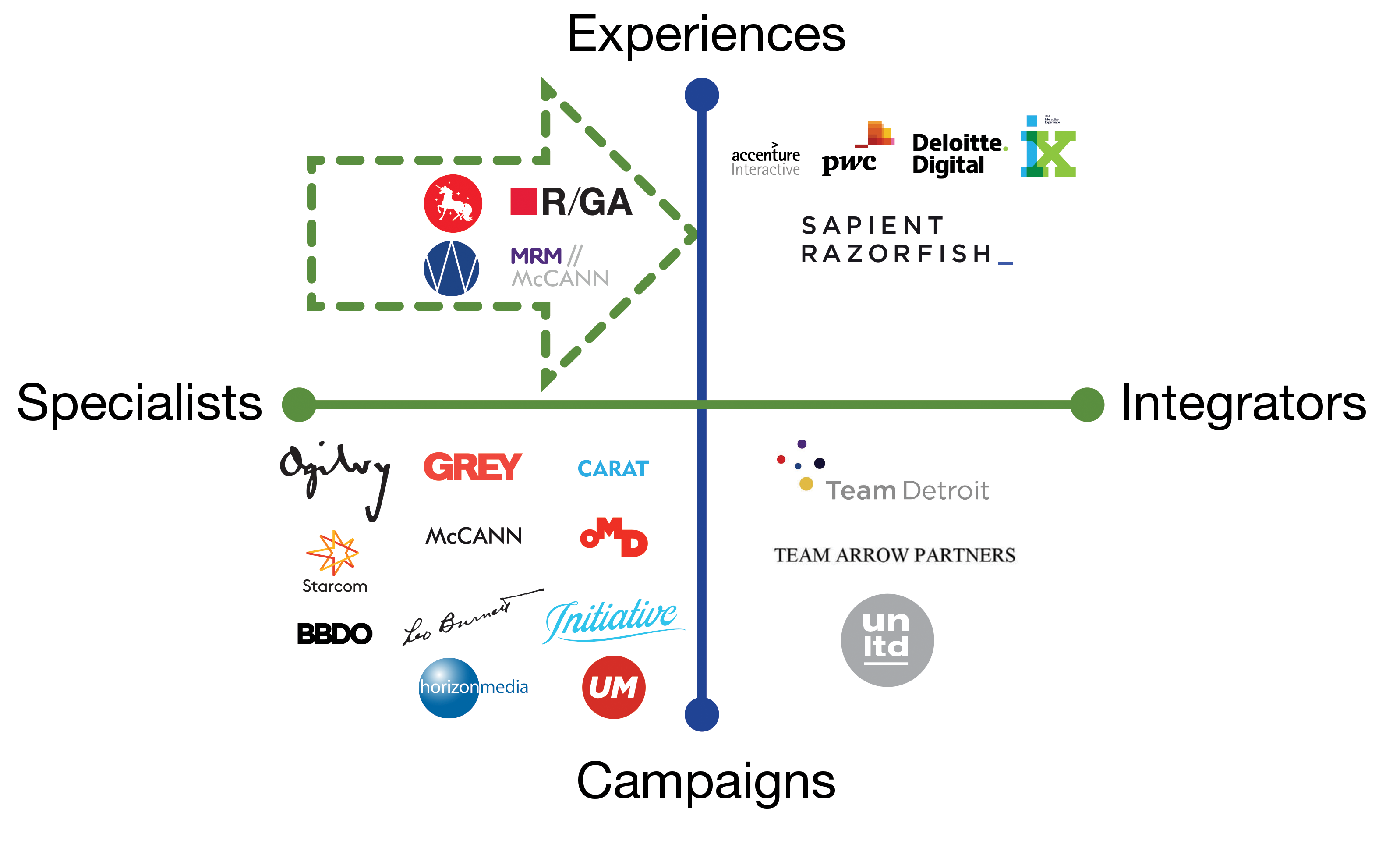Time’s Up: Can Ad Agencies Put the Past Behind Them?
Now that customer experience trumps media advertising, brands need marketing partners who will help them think differently. To stay in the game, ad agencies will need to reinvent themselves.

Ad agencies are recognizing their time may be up. No one is going to turn the ad spigot back on. Brand marketers are being challenged to find better ways of spending their money, mainly by improving the customer experience. Which puts ad agencies in a tough spot: how do they give up an operating model that has barely changed in more than a century?
The surge in ownership of smartphones and the pervasiveness of social media has brought digital disruption to the doorstep of agencies. Even as ad agencies watched traditional media buying decline, they counted on digital advertising to make up the difference. That is, until last year when advertisers blew the whistle on a “fraudulent” digital media supply chain (led by the most vocal critic – and biggest spender of all – Proctor & Gamble). Their chief concerns: ad fraud, proof of viewability, and brand “safety”. But they also called out the agency practice of buying digital media and selling it to them at a higher price (known as arbitrage). Ironically, the first generation of agencies started out doing exactly that in the horse and buggy era when as media brokers they earned commissions selling newspaper space to advertisers.
Long in denial over the shrinking role of advertising, ad agencies are now being displaced as the “strategic provider of record”. Either they figure out how to solve problems other than through advertising, or they will fade into history, as much an ancient memory as patent medicine ads. “It’s pretty miserable out there,” confesses Serge Rancourt, founder of the fast-growing Toronto start-up agency No Fixed Address. “Clients feel like they don’t get value from their agency and the agency feels like they don’t get the billing to make money. So we need to reinvent this.”

Nick Dean, former head of the agency KBS Canada, who left the industry to head up a medical cannabis company, agrees: “I think the traditional agency model is dead at this point. I don’t know when it happened, but we commoditized ourselves. I think agencies are in a position where they need to reinvent themselves in some way, shape or form.” After a meteoric rise through the agency ranks, Dean grew disillusioned with the state of the business, his agency caught in a vicious circle between the pushback he was getting from clients over hourly fees and the pressure from his parent company to hold firm on his margins.
The expanded roster of strategic agencies added an extra layer of complexity to managing customer interactions across touchpoints. Who now had responsibility for defining the total brand experience?
On top of clients demanding more for their money, agencies are feeling the heat from the management consultancies who have moved aggressively on to their turf, competing for lead agency assignments. Four of the major consultancies now rank amongst the largest agencies in the world, led by Accenture. Just this past Fall, for example, Fiat Chrysler named Accenture Interactive its global experience agency of record for Maserati, explaining that, “We want to engage with our customers across all channels in more meaningful ways. Accenture Interactive have the capabilities to manage our customer touchpoints holistically so we can deliver great experiences that build consistent, seamless and authentic interactions with our discerning customers.”
Even the phrasing of that publicity release must sound like a foreign language to many agencies – a language they never bothered to master until now. Instead they have treated each new advancement in communications technology as just another media opportunity, failing to see the larger picture that was emerging: a connected society with the power to dictate the terms of engagement. Their line of sight extended only as far as the next earnings report which hinged on increased ad revenue and production fees.

Identity Crisis
The long slow decline of ad agencies began in the mid-1980s when many of the large marquee shops chose to go public or were acquired and consolidated. Prior to that agencies were considered a strategic partner, seen by owners and executives as part of their inner circle, relied upon to bring a fresh outside perspective. But as agencies were swallowed up by holding companies, that personal bond, formed through a shared purpose and responsibility, was lost. Ownership of the agency relationship was handed down to mid-level apparatchiks, shutting agencies out of the C-suite.
The waning influence of ad agencies over business direction and strategy was costly because it made them interchangeable, opening the way for procurement to get involved. Pitching for new business was reduced to creative shootouts, where new ideas were given away in the hope of being crowned the winner, and that just led to the devaluation of brand strategy as a differentiator. Marketers only wanted to pay for project execution, not the thinking behind it. Since their revenue model was anchored in the “30-second spot”, ad agencies had to make money producing campaigns, which worked as long as the triangulation of ads, media and messaging was the dominant model. But once that mass media model was crippled by audience fragmentation and ad avoidance, agencies experienced an identity crisis: could they keep trying to be all things to all people?
As profit margins got squeezed by fee-haggling, ad agencies found it increasingly difficult to attract the top calibre talent required to overturn the status quo. The head count restraints imposed by the holding companies further shackled them. Meanwhile, marketers started to question whether their ad agencies could bring them the innovative solutions they needed. They had come to realize that digital channels were no longer simply a minor part of the media mix but had become their primary connection point with people. At that point digital service providers were invited to bridge the strategic gap, undercutting the leadership role of the ad agencies, who still looked at digital as a campaign tactic.
The expanded roster of strategic agencies added an extra layer of complexity to managing customer interactions across touchpoints. Who now had responsibility for defining the total brand experience? Which is how the management consultancies first got involved, trading on their reputation as change agents. Marketers accepted them as a business partner who could help them avoid disruption by helping them become customer-centric.
Too Little, Too Late?
Improving the customer experience by transcending channels has now become a strategic priority for just about every business today. And that has left the ad agencies ghettoized, forced to compete with online platforms like Tongal which connect businesses to a wide network of creative freelancers. But agencies have begun to fight back: Introducing consultancy practices of their own, reorganizing themselves, expanding their capabilities to include more data-related disciplines. But is it too little, too late? Has their past caught up with them? Some companies have lost faith in their agencies to adapt quickly enough, choosing instead to bring marketing services in-house. That way, they can be more agile, shortening the time between experience design and delivery. But there is a big cost to bringing agency work in-house – the quality of the thinking.
Creative thinking is not a manufacturing process – ideas that resonate do not come off an assembly line. They are born out of inspiration – the offspring of art plus insight. They are incubated and nurtured into existence. Ideas power the central narrative of every brand. They connect what the brand stands for with the story it tells. A great idea is a unifying force, helping everyone understand how the brand can make a difference in the lives of people – the role it plays in helping them. And that idea must be closely associated with their belief system – with how they see the world.
All of that is very tough to pull off if creative work is being auctioned off to a stable of freelancers indifferent to the brand vision. Agencies have always performed best functioning as a creative hive – turning observations of the human condition into an emotional connection with people. Where they have gone astray is losing sight of that core mission: caught up in creating campaigns when their real job was to create customers.
Today agencies have an opportunity to return to their roots and lay claim to the future of marketing: to take what they have always been good at – brand innovation – and marrying it to the invention of unique experiences which create value for customers. As Sir John Hegarty, founder of the U.K. creative agency Bartle Bogle Hegarty writes, “An advertising agency should not expect to revere or reflect the status quo, but to challenge it – help redefine it.”
Agencies don’t have to put the past entirely behind them. They just have to preserve the part they were always best at: figuring out how to bring inspiring ideas to life.